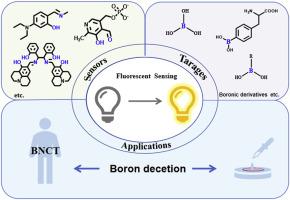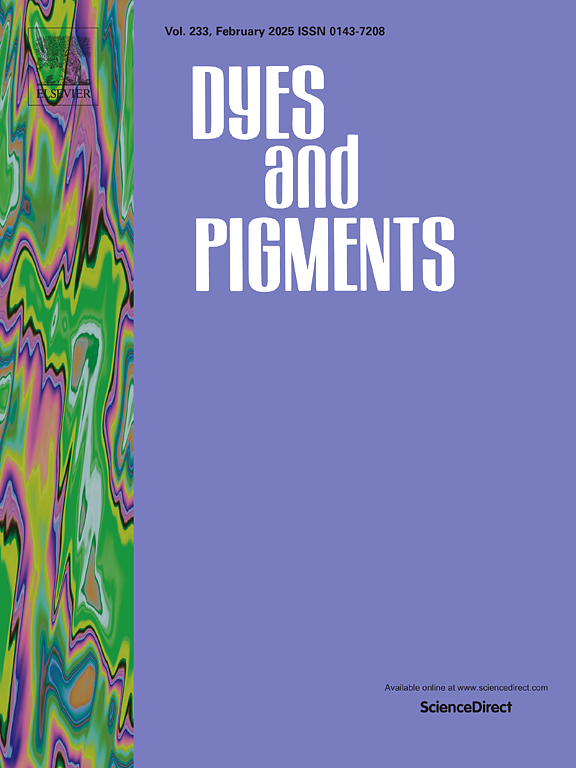硼酸衍生物的荧光传感:设计、合成、机理、在硼中子俘获治疗中的应用及展望
IF 4.1
3区 工程技术
Q2 CHEMISTRY, APPLIED
引用次数: 0
摘要
硼在自然界中无处不在,以硼酸和硼酸酯为基础的药物目前被广泛开发和使用。硼中子俘获疗法(BNCT)是目前世界范围内正在探索的一种创新的癌症治疗技术,它具有高选择性靶向癌细胞,同时最大限度地减少对健康组织的损伤。BNCT的治疗过程主要包括将靶向10B药物递送到肿瘤部位。10B药物经过中子照射后,会吸收中子,发生核转化,变成11B, 11B衰变产生7Li和α粒子,从而破坏DNA,杀死癌细胞。输送到肿瘤细胞的10B药物的浓度和位置是BNCT治疗效果的关键决定因素,因此对硼酸类药物的感知尤为重要。本文综述了不同螯合配体的硼酸传感器的设计、合成及其在BNCT中的应用。最后,我们分析了这些传感器目前的局限性,并提出了未来的展望,以提高它们在生物医学应用中的效用。本文章由计算机程序翻译,如有差异,请以英文原文为准。

Fluorescent sensing for boronic acid derivatives: Design, synthesis, mechanism, application and perspective in Boron Neutron Capture Therapy (BNCT)
Boron is ubiquitous in nature, and drugs based on boronic acid and esters are now widely developed and used. Boron Neutron Capture Therapy (BNCT), with its high selectivity in targeting cancer cells while minimizing damage to healthy tissues, is currently an innovative cancer treatment technology being explored worldwide. The treatment process of BNCT primarily involves delivering targeted 10B drugs to the tumor site. After neutron irradiation, the 10B drugs will absorb neutrons and undergo nuclear transformation into 11B which subsequently decays to produce 7Li and alpha particles, thereby damaging DNA and killing cancer cells. The concentration and location of the 10B drugs delivered to tumor cells are critical determinants of the therapeutic effect of BNCT, making the sensing of boronic acid drugs particularly important. In this review, the design and synthesis of various boronic acid sensors with different chelating ligands were discussed, as well as the applications in BNCT. Finally, we analyze the current limitations and propose future perspectives for these sensors to improve their utility in biomedical applications.
求助全文
通过发布文献求助,成功后即可免费获取论文全文。
去求助
来源期刊

Dyes and Pigments
工程技术-材料科学:纺织
CiteScore
8.20
自引率
13.30%
发文量
933
审稿时长
33 days
期刊介绍:
Dyes and Pigments covers the scientific and technical aspects of the chemistry and physics of dyes, pigments and their intermediates. Emphasis is placed on the properties of the colouring matters themselves rather than on their applications or the system in which they may be applied.
Thus the journal accepts research and review papers on the synthesis of dyes, pigments and intermediates, their physical or chemical properties, e.g. spectroscopic, surface, solution or solid state characteristics, the physical aspects of their preparation, e.g. precipitation, nucleation and growth, crystal formation, liquid crystalline characteristics, their photochemical, ecological or biological properties and the relationship between colour and chemical constitution. However, papers are considered which deal with the more fundamental aspects of colourant application and of the interactions of colourants with substrates or media.
The journal will interest a wide variety of workers in a range of disciplines whose work involves dyes, pigments and their intermediates, and provides a platform for investigators with common interests but diverse fields of activity such as cosmetics, reprographics, dye and pigment synthesis, medical research, polymers, etc.
 求助内容:
求助内容: 应助结果提醒方式:
应助结果提醒方式:


